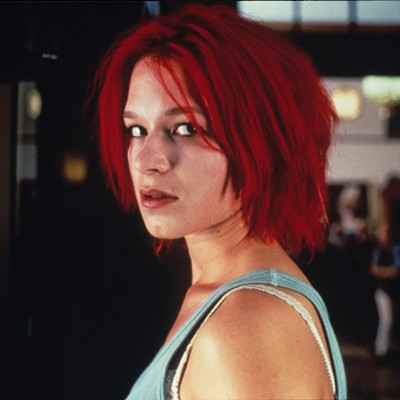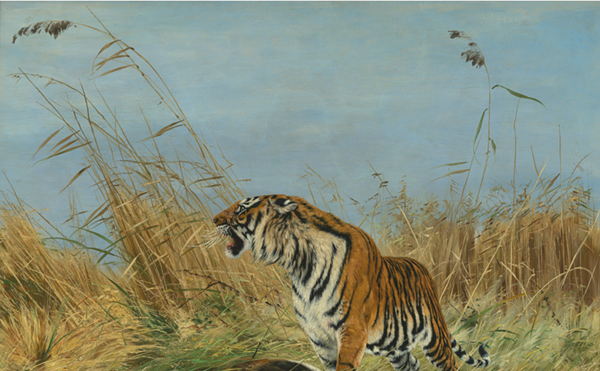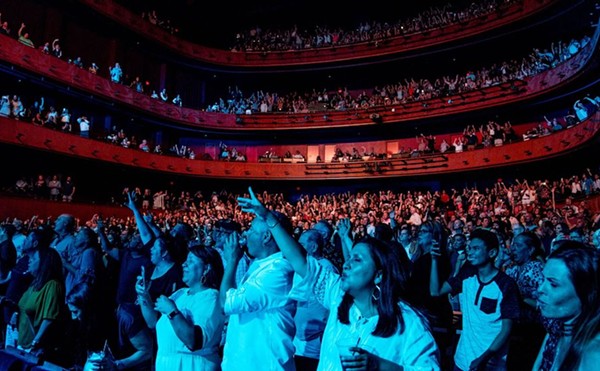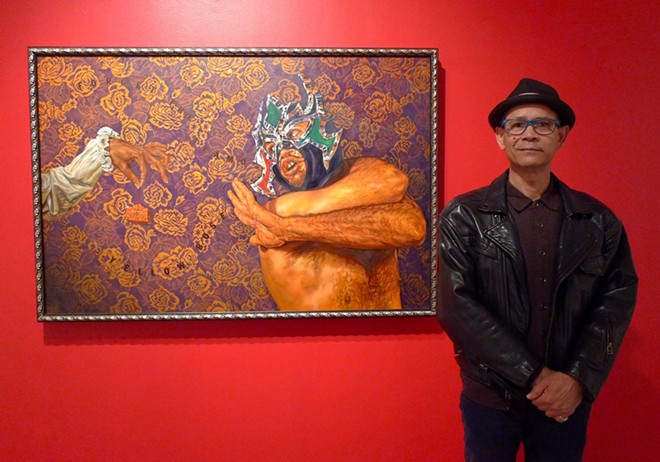
Friends and associates of the late San Antonio visual artist Ángel Rodríguez-Díaz, known for his stunning portraiture work and sculptures, said he will be remembered as forward-thinking creator who tapped into classic influences.
Rodríguez-Díaz, who died March 31 at age 67, attracted international attention for his ability to combine technical proficiency with political and social commentary to create an instantly recognizable visual style.
"He was really a phenomenal technician," said Ruben C. Cordova, who curated a career-spanning retrospective of the creator's work at Centro de Artes in 2017. "He could really render faces and details with extraordinary power. But I think also he made really uniquely original works by using self-portraiture as a vehicle for social criticism."
Rodríguez-Díaz was born in San Juan, Puerto Rico and later moved to New York City where he attended Hunter College and earned his MFA. In 1995, he settled in San Antonio with his partner Rolando Briseño, a fellow artist in his own right.
While at Hunter College, Rodríguez-Díaz' professors told him painting was dead. Nonetheless, he took it upon himself to learn how to paint like the old masters by visiting museums.
He used his portraiture works as a means for social commentary and often used himself as the main subject. As a gay man who lived through the AIDS epidemic of the 1980s, he created a series of paintings depicting nude figures living with HIV. That series was later exhibited as "The Full Monty" at FL!GHT Gallery in 2017. In the early 2000s, Rodríguez-Díaz began donning Mexican wrestler masks in his work, signaling his assimilation into Mexican American and San Antonio culture.
Rodríguez-Díaz also is known for public artworks located throughout the Alamo City. Among his most visible of those pieces is The Crossroads of Enlightenment, a pair of metal towers resembling smokestacks located at the intersection of Blanco and Basse Roads. Both are embellished by intricate cutouts.
Other public works by the artist include The Birth of a City, a large photo mural at the Cliff Morton Business and Development Center, and a two story glass curtain called DNA: Mosaic of Our Humanity at the University Health System Hospital.
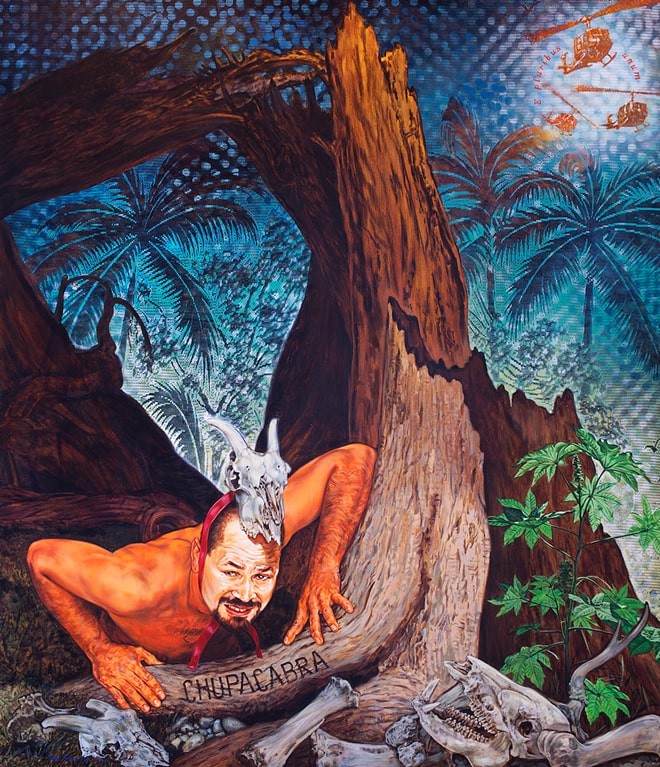
Baroque influences
Rodríguez-Díaz created dramatized portraits to critique a range of topics including the oil industry, U.S. imperialism and the Iraq invasion. By inserting himself in the middle of the narrative, he could present himself as a witness to history while making the point that Latinos have often been marginalized or excluded.
"He was very cognizant of artists who were habitual self-representers," Cordova said. "I think Frida Kahlo was an important model in that regard."
Rodríguez-Díaz was also influenced by Baroque artists such as Diego Velázquez and Peter Paul Rubens. Cordova adds that although Rodríguez-Díaz produced modern art, he used techniques pioneered by the old masters — or at least gave the illusion that he was.
Among the most visually striking works in the 2017 retrospective at Centro de Artes were three monumental paintings known as the Goddess Triptych. There, Rodríguez-Díaz depicted three individual portraits of a full-figured, voluptuous, nude African American woman. The figures were the antithesis of the typical thin, white Venus figure often seen in western art.
"It's so startling because it's something that we haven't really seen much," Cordova said. "Especially not in monumental paintings in this country. He's really mythologizing them in a way, aggrandizing them, glorifying them, making them goddesses."
As a Puerto Rican man, Rodríguez-Díaz understood that he was a descendant of both indigenous and African peoples and he wanted to work that into his paintings, according to Cordova.
The painter depicted black subjects as a way of investigating African mythology and to connect with his own heritage.
According to Rodríguez-Díaz's partner Briseño, the San Antonio Museum of Art has recently acquired the third painting in the Goddess Triptych. It will join the other two works in the series, which are already in the museum's collection.
'Allowing themselves to be seen'
Patricia Ruiz-Healy remembers Rodríguez-Díaz as one of the first artists she was able to work with at her Olmos Park gallery.
"When I opened the gallery back in 2006, my first ever show included the work of Ángel Rodríguez-Díaz, he was part of that inaugural show," Ruiz-Healy said. "I also took his work to one of the first art fairs of Latin American art in Miami."
She remembers the use of fabrics in his paintings as one of his most unique characteristics, echoing Cordova's sentiment that he had the technical chops of "an old master."
"He really knew how to paint," Ruiz-Healy said. "I always admired that and the Baroque elements you would see in his work."
Artist Jenelle Esparza worked as a studio assistant to both Rodríguez-Díaz and Briseño.
"He was really kind and thoughtful," Esparza said of the former. "Every time I was on the computer, he would let me work but would make me a sandwich or a fruit smoothie and place it nearby."
She remembers Rodríguez-Díaz as patient, detail oriented, soft spoken, contemplative and vibrant. He was also a great salsa dancer. The Goddess Triptych remains her favorite piece of his work.
"They are just so stunning," Esparza said. "And, all together, they are just breathtaking."
Vocalist and former San Antonio Poet Laureate Andrea "Vocab" Sanderson never met Rodríguez-Díaz but says she was struck by his work after a visit to SAMA in 2020. She was filming a music video in partnership with the museum when she noticed two of the paintings from Rodríguez-Díaz' Goddess Triptych.
"You walk in there and there are these portraits of nude women of color, and I was like, 'Well, my body looks like their body, and I want to stand in this room. I want to perform in this room,'" she said.
In the music video for her song "Nouveaux," Sanderson is seen standing alongside Rodríguez-Díaz' paintings as well as other works in the museum.
"When I look at those portraits, they represent strength to me," Sanderson said. "There is a power to be regained in these women posing and allowing themselves to be seen."
Follow us: Google News | NewsBreak | Instagram | Facebook | Twitter



